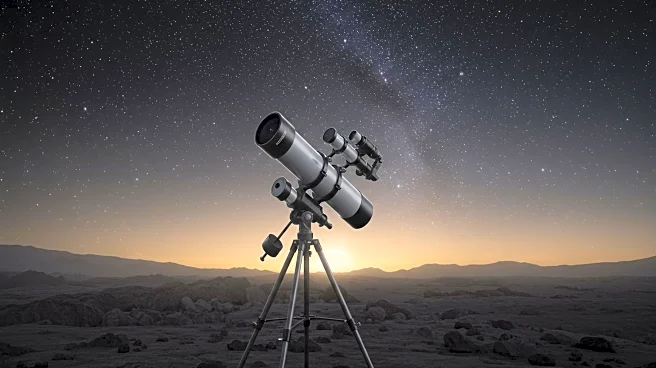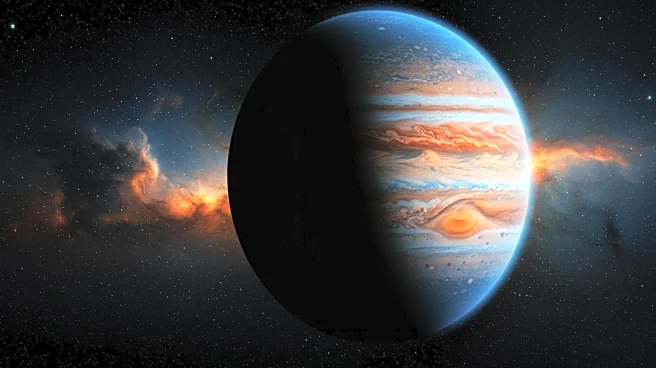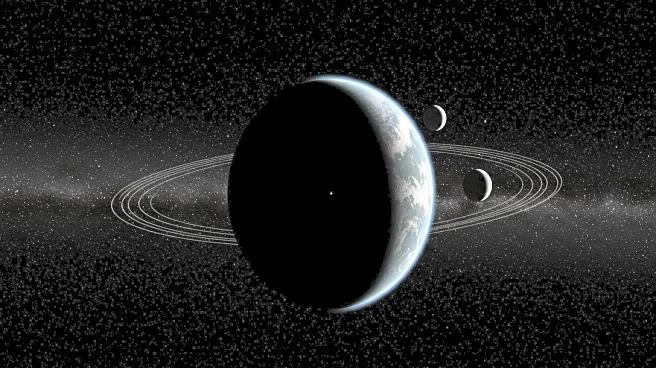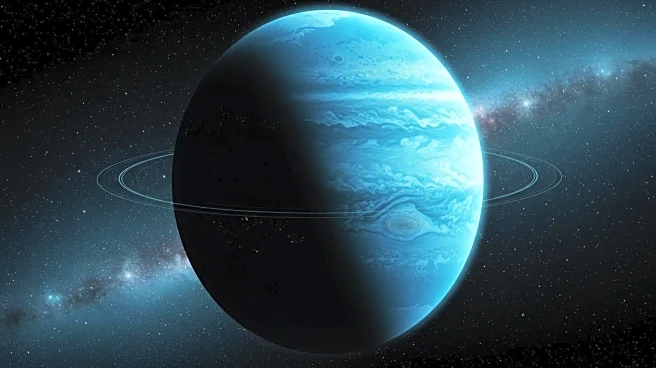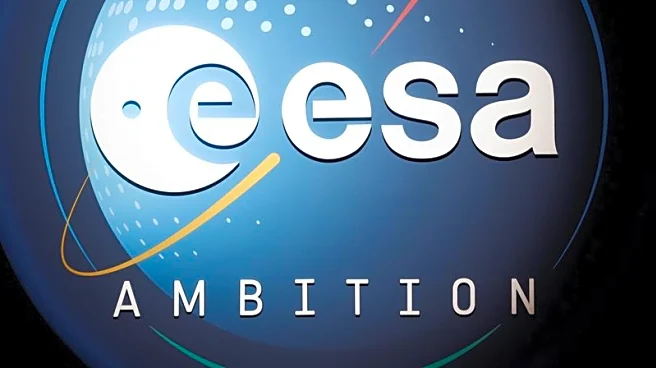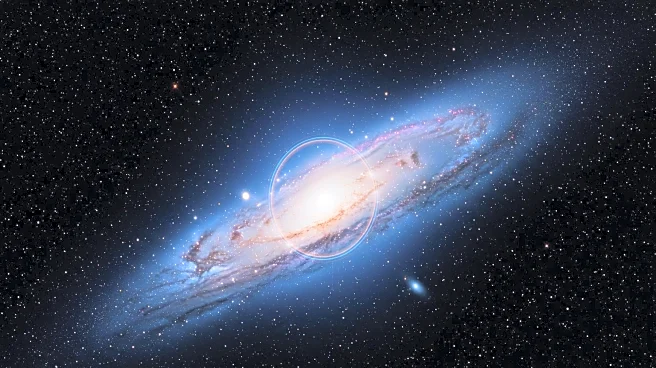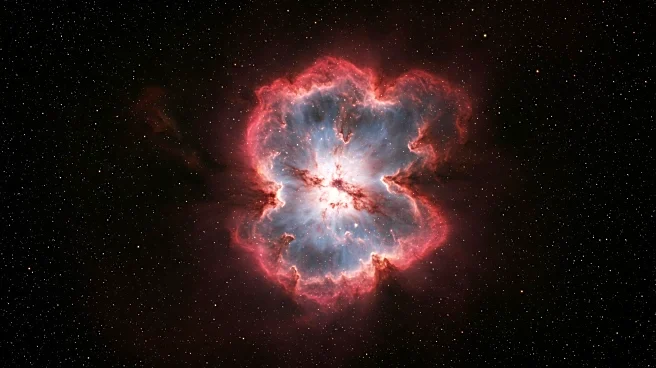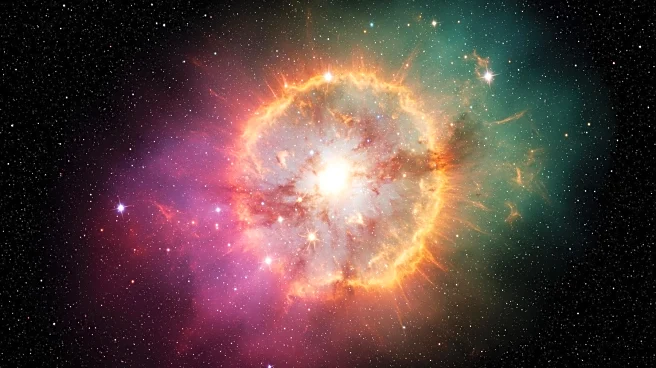What is the story about?
What's Happening?
A physicist from the University of Maryland, William DeRocco, has proposed an innovative plan to use Ganymede, Jupiter's largest moon, as a gigantic dark matter detector. The proposal, detailed in a preprint submitted to arXiv, suggests that massive dark matter particles may have struck Ganymede's icy surface, creating deep ruptures. These particles, larger than those typically searched for by ground-based detectors, could have left 'dark matter craters' on the moon's surface. The idea is that spacecraft like NASA's Europa Clipper or ESA's JUICE could observe these craters during their missions, potentially revealing new insights into cosmic dark matter.
Why It's Important?
The proposal to use Ganymede as a dark matter detector is significant because it represents a novel approach to understanding dark matter, which is believed to make up 85% of the universe's mass. Traditional methods have struggled to detect dark matter due to its weak interaction with other matter and its invisibility to light. If successful, this approach could provide new evidence and understanding of dark matter, potentially revolutionizing physics and our comprehension of the universe. The implications for scientific research are vast, as it could lead to breakthroughs in astrophysics and cosmology.
What's Next?
The next steps involve determining whether NASA or ESA will consider DeRocco's proposal for their upcoming missions. If adopted, these missions could focus on studying Ganymede's surface for evidence of dark matter craters. The scientific community will be watching closely to see if this unconventional idea can provide tangible results. The proposal's acceptance and subsequent research could pave the way for new methodologies in dark matter detection, influencing future space exploration and research priorities.
Beyond the Headlines
This proposal highlights the creative and bold approaches scientists are willing to take to solve longstanding mysteries in physics. It underscores the importance of testing unconventional ideas in the scientific process, even when definitive evidence is lacking. The potential discovery of dark matter craters on Ganymede could also lead to a deeper understanding of the moon's geological history and its interactions with cosmic phenomena.
AI Generated Content
Do you find this article useful?
